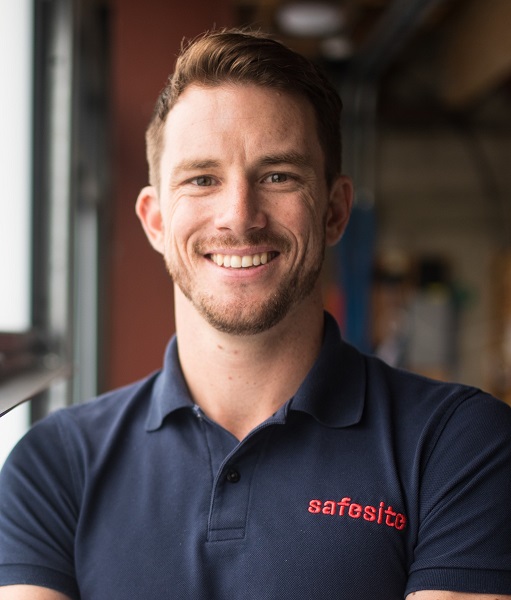Safety programs aren’t known for their agility. This is mostly a good thing: Standardizing your processes reduces confusion and noncompliance. But having a rigid safety system can produce undesired effects, such as complacency and heightened risk.
An agile work safety program can reduce risk, reduce incidents, lower costs related to injuries, and build a better safety culture.
Side note: When I first envisioned this article, COVID-19 was a distant threat. Today, most of us are having to adapt daily to new information and recommendations to address new hazards posed by the coronavirus. My goal for this article is to inspire discussion around making strategic changes for the health of our workers.
What’s an Agile Work Safety Program?
“Agile” is the ability to make strategic shifts in systems, processes, and technology. For a company to be considered agile, it must be able to change from one stable system to another in a timely manner.
With that definition in mind, an agile work safety program is an adaptable system. The foundation of agile safety is a team or an individual who has the authority to initiate and execute positive change.
A work safety program that initiates but doesn’t properly execute on change would not be considered agile, nor would a program that hasn’t been given the funds or ability to incorporate best practices that could reduce worker risk.
5 Ideas for Building Agility into Your Safety Systems
When it comes to managing change, every company has different processes and needs. Here are five ideas for making a safety program more agile, but you may come to some different conclusions with regard to your program.
- Assume your program will change at least annually.
- Send executives to safety events.
- Reduce the administrative burden on safety staff.
- Supplement your training program with manufacturer’s guidelines.
- Champion the change.
1. Assume Change
Your safety program will change at least annually. New worksites, workflows, clients, and personnel affect constant change in your program. What’s more, new technology, tools, equipment, best practices, and standards are emerging at a greater rate than ever before.
Assuming change will happen allows you to plan and prepare instead of reacting to the demands of your safety personnel.
You may forgo some items in your safety budget in order to set aside change funds that could be applied to training employees on a new hazard, for example. Or, you may choose to invest a little more time guiding your safety staff and project managers to work together to implement change.
2. Send Executives to Safety Events
When safety personnel are the only employees attending safety-themed events and webinars, you lose a great deal of information in translation.
To apply information and practices learned at an event, your safety manager must prepare presentations, lead meetings, and enter long periods of deliberation. This could be avoided by periodically sending executives to key events for your industry.
Events provide a unique learning experience that e-mail newsletters can’t. Sending nonsafety personnel—members of the C-suite in particular—to safety events will ignite a greater passion for safety in your company.
While live safety events are largely on hold right now (see the American Society of Safety Professional’s (ASSP) Safety Expo and the Associated General Contractors of America’s (AGC) Safety and Health Conference), livestreams and webinars, like those provided by the National Safety Council (NSC) and ASSP, are excellent alternatives.
3. Reduce Administrative Burden
Observing workers and training employees in the field are excellent ways to identify gaps, problem-solve a solution, and execute a change face-to-face. But when safety directors are busy and bogged down with paperwork and data-crunching, they lose valuable field time.
By reducing operational excess and office time, you make more space for positive change to occur.
4. Use Manufacturer Guidelines and Resources
Upgrading or replacing equipment/personal protective equipment (PPE) is one of the most frequent changes implemented in safety programs. But often overlooked are the updated processes and instructions that go along with that equipment.
Manufacturers use international and voluntary standards to engineer products. These standards may be more technically up to date than those of regulatory bodies like the Occupational Safety and Health Administration (OSHA). Updating training for various tasks with the help of the manufacturer’s guidelines is a great way to sync your program with best practices.
5. Champion the Change
Use your program to surface safety information, and use it as a discussion piece with your teams. Listen to feedback, and enact a process that facilitates rapid changes to unsuitable situations or processes.
Job hazard analyses (JHAs) are important for identifying safety risks. OSHA also provides a plumb line in its Recommended Practices.
When presented with a change, do the necessary due diligence to ensure it’s feasible, but don’t make it impossible for your safety team to gain your stamp of approval.
In an agile safety program, a leader’s role is to see changes through. In order for this to happen, you must first permit some changes to occur. Examine recommendations closely and quickly.
Once your team is ready to move forward, champion the change by endorsing the directives of your safety manager and providing ongoing implementation support. Communicate the changes, and ensure everyone understands the new process.
Setting goals is a great way to provide support. For example, if your goal is to monitor isolated workers using smartwatches, you can set deadlines for training one crew in procedures, equipping the crew, reporting on progress, and then repeating the process for the rest of your jobsites.
Conclusion
An agile work safety program is another way to describe a system that consistently learns and adjusts to adopt best practices. Positive change promotes a strong safety culture and improves your safety record. Don’t change without performing the proper due diligence, but when your team identifies a better way to reduce risk, champion the change.
|
|


 Peter Grant is cofounder and CEO of
Peter Grant is cofounder and CEO of